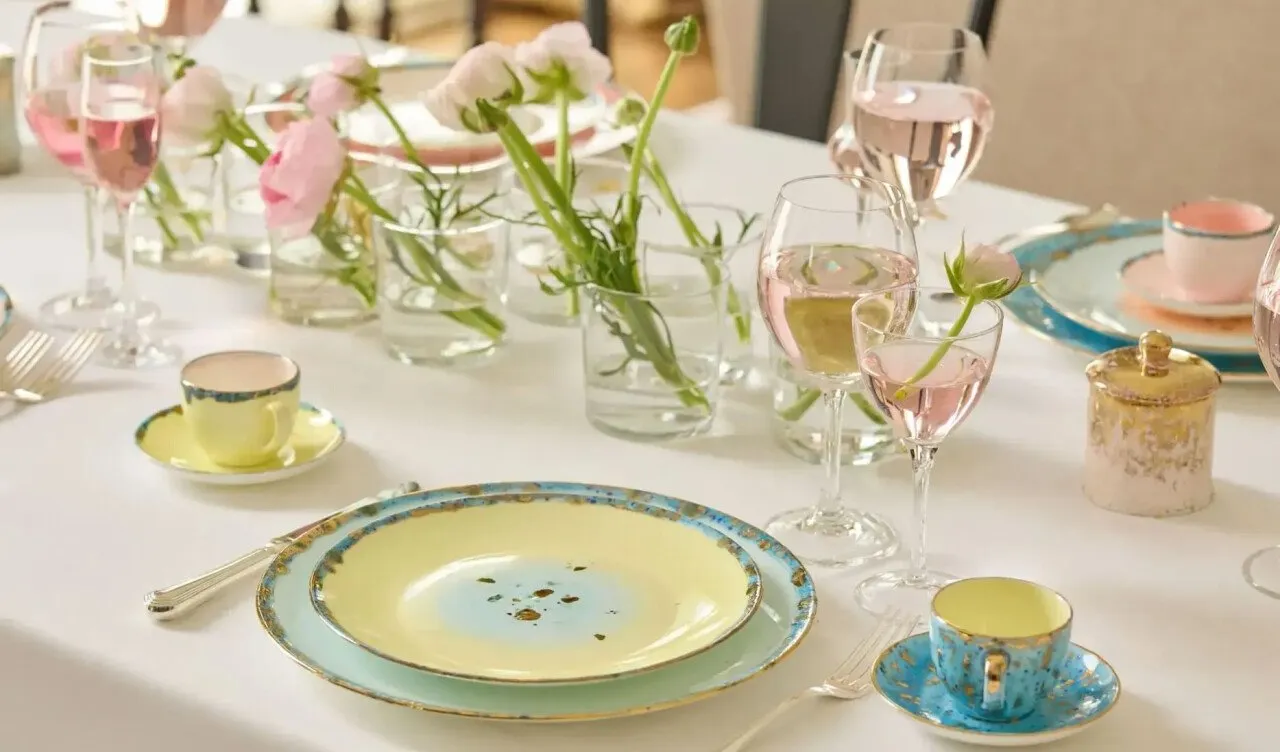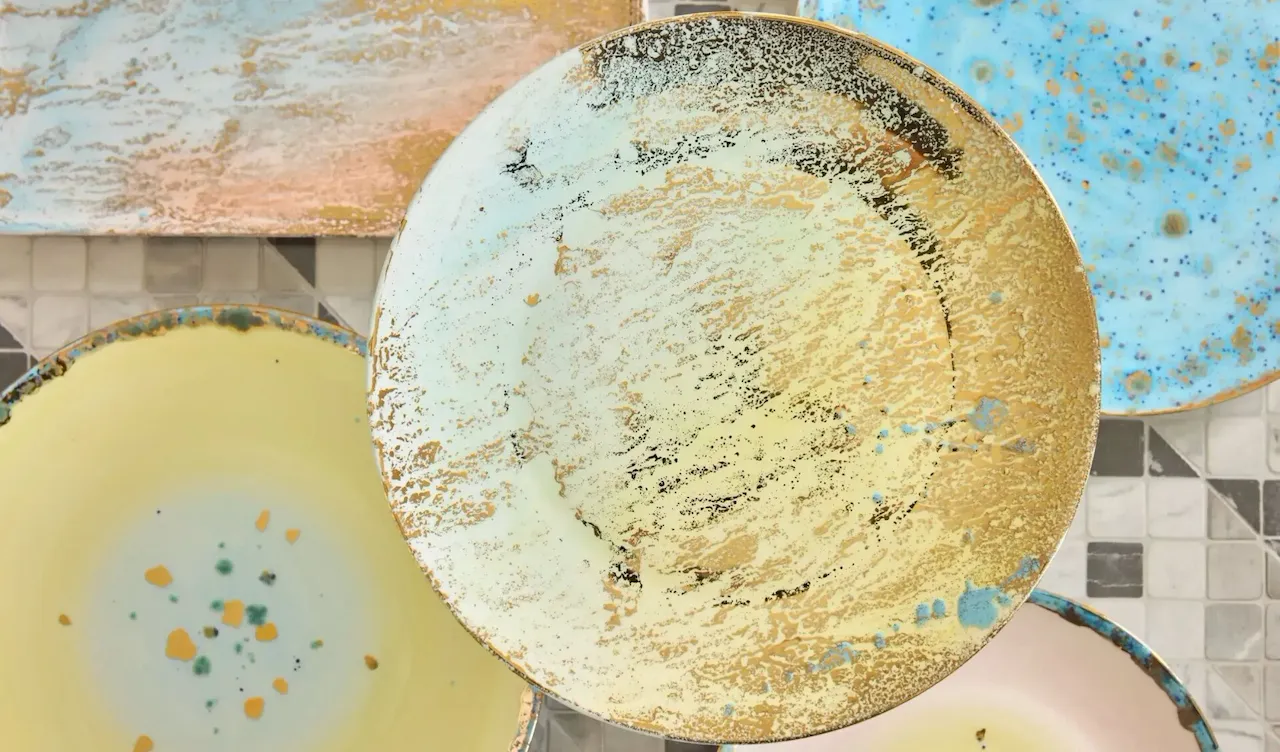Our Roman table with Coralla Maiuri

What does Rome represent to you and your art?
Rome is a city that has lived through so many contrasts: brutality and conquest, but also the highest civilisation, culture, and unique beauty. The symbol of Rome, the Colosseum, is a stunning amphitheatre, yet it sits on land soaked in blood. Rome is a mix of genius, chaos, and beauty. For my work, it’s a place where I can break down mental and emotional barriers. I try to create beauty that’s like light emerging from the darkness.
Rome is a city full of hidden details and unexpected surprises. Is there a little-known spot you particularly cherish?
There are so many hidden spots. Capers, arugula, and bracken grow everywhere. One place that really feels like home to me is Via Margutta. I lived there from 12 to 23, and it’s this little corner of the Palazzo Ruspoli courtyard. There, the doorman had a garden, chickens, and even a pig — it’s like a little world of its own.
You’ve described Rome as both Baroque and rural. How do these two personalities coexist?
Goethe had this way of describing it where you could almost hear the sheep bleating in the distance. The countryside that once made its way into the city felt like a delicate lace holding together humble houses and basilicas — places where even the Borgias and the gardeners used to walk.
Like Rome, your work blends the classical and the modern. Is there a particular historical period that influences your creative process?
Honestly, I can’t point to any one era from the past that directly connects to the present. It’s more about who I am. I perceive things that come from all over, blending them into something that feels right for me.
Why was Hotel Eden your perfect creative partner for this project?
Once I experienced the peaceful world of Hotel Eden, I knew my creativity would have a natural place to flow. The harmony there really sparked something in me.
What makes the Eden Home collection unique?
Most of all, the fact it’s infused with the timeless elegance of Hotel Eden. The rooms remind me of the mosaic floors at Villa Jovis — so much history in the details. It’s the kind of place where my parents could have stayed: classic yet modern. They trusted me with this collection, which blends the past and the future seamlessly. Like the hotel, I don’t chase trends; I just follow what feels authentic to me. It was like a meeting of two energies that strengthened each other.
What matters most to me about this project is that through my work, guests can experience a slice of Rome. Like me, Hotel Eden is truly Made in Rome.
How would you define luxury today?
Luxury, to me, should speak of culture and warmth. It should be timeless, beyond trends, and should make you dream. It’s about quality, care, and personality — something simple, humble, precious, and rare.
In your work, gold and bright colours often take centre stage. Is that inspired by the colours of the city?
Absolutely. Rome is so vibrant — the domes, the bells, masterpieces everywhere, and even the spontaneous greenery. Everything around me gets absorbed and processed. An artist is greedy for what touches them, and I find beauty in everything — from the simplicity of the countryside to the sparkle of precious stones and gold. I use gold not just to decorate, but to make things explode with beauty, treating it like another colour in my palette.
If Rome itself were a laid table, how do you envisage it?
A Roman table feels ancient, with dishes like broccoli, boiled meatballs, and Picchiapò-style boiled meat. I’d imagine it with a wine-coloured velvet tablecloth, lots of glasses, silver pitchers, and a centrepiece that reflects the fountains of Rome. I’d add porcelain biscuit stones, glossy gold drippings like lava, and pink plates with crystals that capture gold worn by time. From Hotel Eden, I’d choose the view of Rome with the pine trees of Villa Borghese. And of course, you can’t forget Lariano bread and the soft, warm ponentino wind.
The Eden Home collection is a celebration of craftsmanship, creativity, and the uniquely Roman essence of Hotel Eden itself. You'll find these pieces in select suites, or available to purchase exclusively at Hotel Eden.




